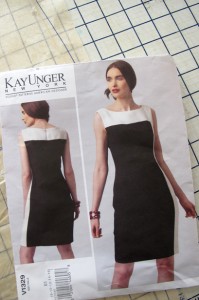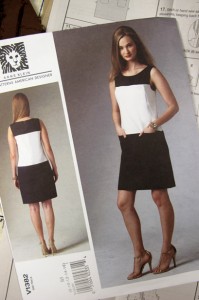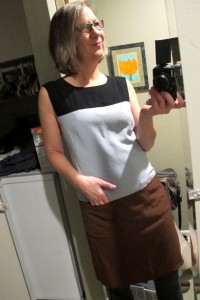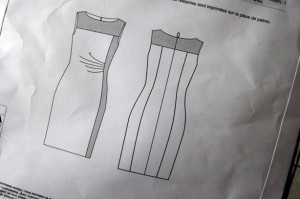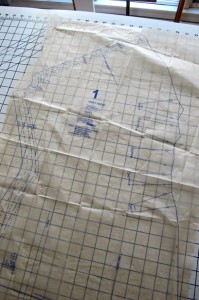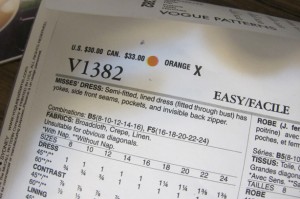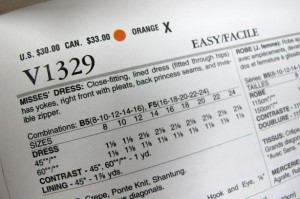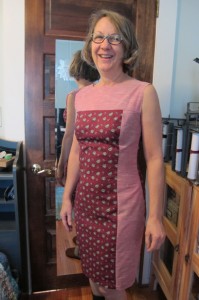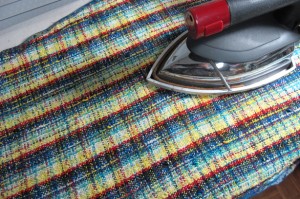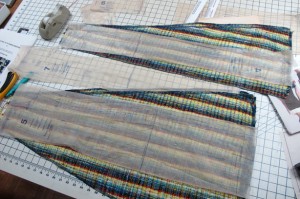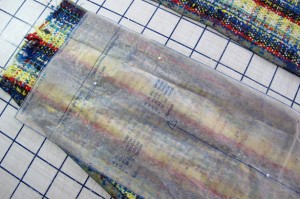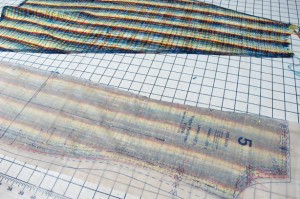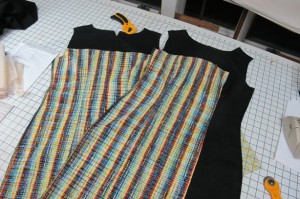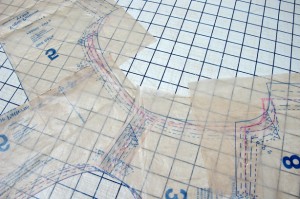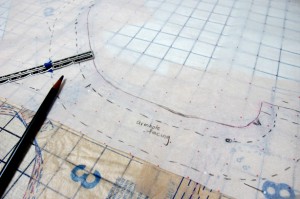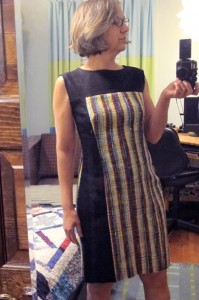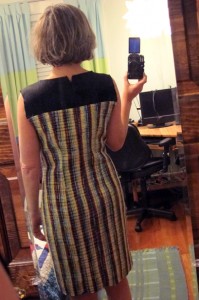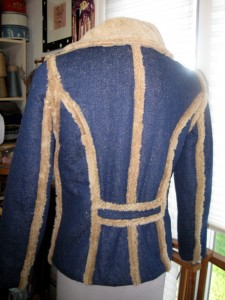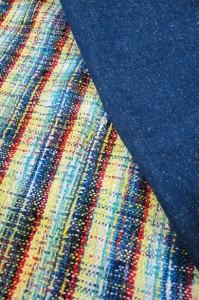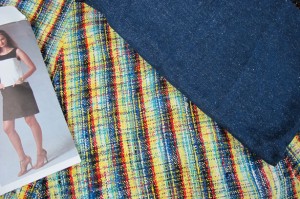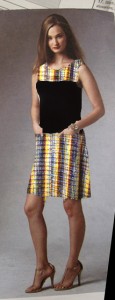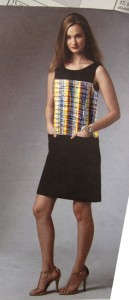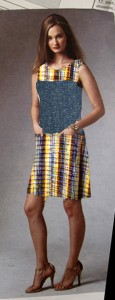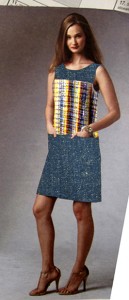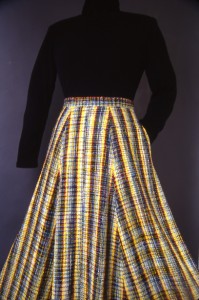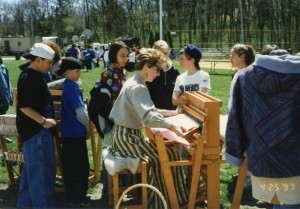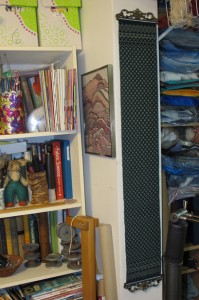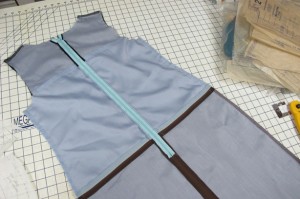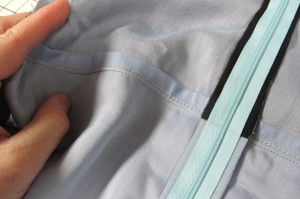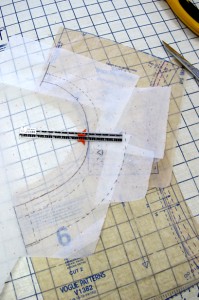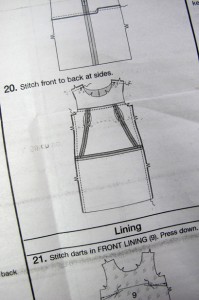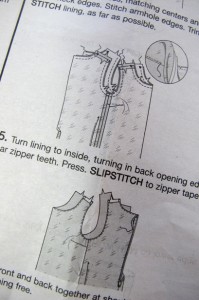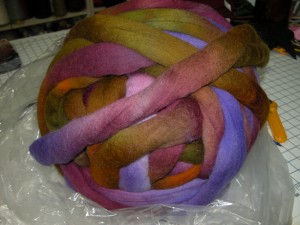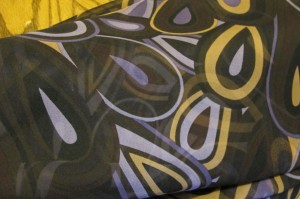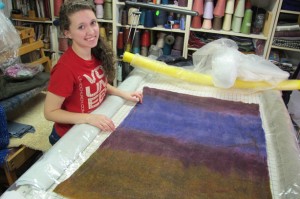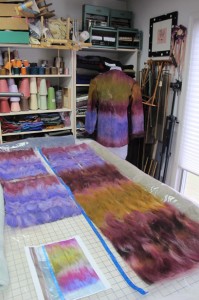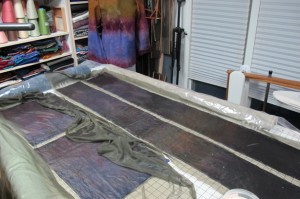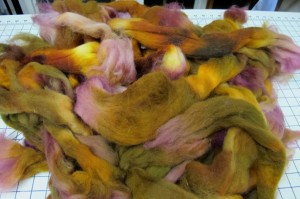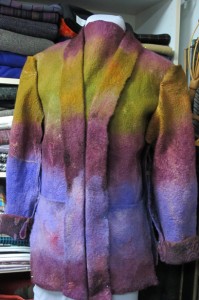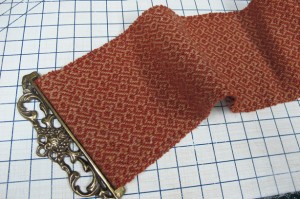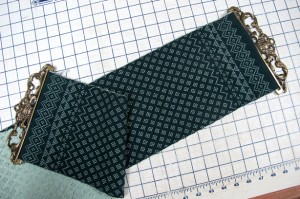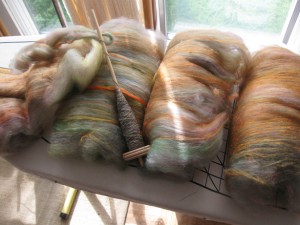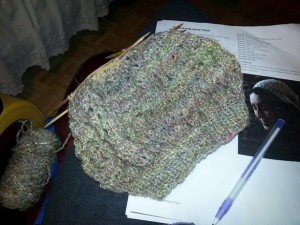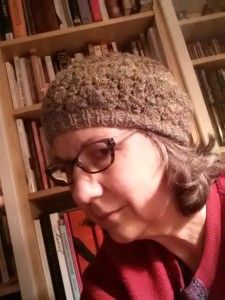Great title for a book…
And this was one for the books…
First, a huge thanks to all of you that took the time to comment about my last two posts. You can’t know how helpful every comment was, and the best part, was that you didn’t just say, “I like the black”, or “I like the stripes in the middle”, you explained why. I have an articulate and thoughtful group of readers and it really helped me think about the choices I had and what I really wanted from this piece.
So that said, I did end up using the black linen. But not the original pattern…
When I first decided to make the bamboo dress, a couple of months ago, I had pulled this pattern from my stash.
I liked this pattern, from Kay Unger Vogue 1329, and thought it would be beautiful in the bamboo, but since I had three colors in bamboo and the dress was only two colors, I had to mull it over for awhile. And the black remnant of bamboo I had didn’t quite fit the length of the side panel in this pattern. When the latest Vogue spring update came through, I found the pattern I actually used, Vogue 1382, and the rest is sort of history.
So I’m looking at the original pattern, which I hadn’t actually put away, and suddenly it hit me, what everyone was saying, that the striped handwoven was too chopped up, and that the black or denim yoke was fine, but wouldn’t it be nice if the handwoven went all the way down from there. The original pattern made much more sense in this situation. Except the front panel had this lovely sweep of pleats at the waist, which meant that the upper part of the front panel would be cut off grain.
That wouldn’t work for my striped fabric and there wasn’t a panel big enough in the skirt to accommodate it.. And the bulky handwoven wouldn’t pleat in a nice drapey way. The lining pieces though, were exactly what I needed. The straight front section, with two little darts for shaping, worked perfectly.
I gathered some reject fabric from the attic, and made up a test garment. The fit was way off, and it was interesting to compare the two patterns side by side. They would appear to be similar in fit from looking at the front of the envelopes, but Vogue 1382, the three sectioned dress, is semi-fitted, so there is much more ease allowance. It was actually too boxy and had to be taken in considerably.
Vogue 1329 is close fitting, which is usually reserved for 8th grade prom dresses and knits. This pattern didn’t seem to be designed for knits, and in fact some of the recommended fabrics were crepe and shantung.
I haven’t worn a “close fitting” dress in years. I’m almost 60. So in the Vogue 1382, where I was cutting the upper back down to a size 10, I was drawing the upper back to a size 16 in Vogue 1329. Who would have thunk it? Which is precisely why, even though I could be a Vogue fit model, I’m so consistent with their sizing, I still make a test garment or two (in this case two) to check the fit before I cut my real fabric. I had my lovely intern Jen help me with the fitting.
Here is the second test garment…
I read all the comments, and looked at the skirt and the black linen, and then at the silk denim. And in the end, the black was more formal, more striking, and more unexpected. So I decided it would be the black.
First I carefully cut the entire skirt apart, seam by seam, and pressed each panel.
Then I laid out the pattern pieces to see if I could actually get them out of the eight gores of the skirt. I actually only needed seven.
In some cases there wasn’t a thread to spare. I actually shortened the dress to the length of the lining to have enough room.
I underlined the black linen with silk organza, and I underlined the handwoven with a fusible tricot. Here’s the thing. The handwoven fabric, woven 20 years ago and severely undersett, (I know a lot more now…) was going to give and stretch if not controlled, and paired with linen, which has no give at all, it would be a disaster waiting to happen. So I fused all the pieces with black tricot, and though it is a little weighty, the handwoven fabric is stable and contained.
I got the front and back finished in a few hours.
I trimmed all the seams with bias tricot, and because the piece is underlined, again, there was no need to cut a separate lining. I just needed to cut facings. So I put the pattern pieces together on the seamlines and traced armhole and neck facings. I’ll put those in tomorrow along with the hem.
Not bad for a day’s work… (Please note, before you write me letters and tell me I made the dress backwards, remember I’m taking selfies in the mirror…)
